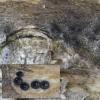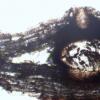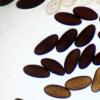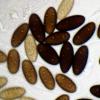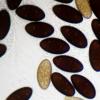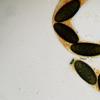
22-07-2020 14:06
 Yulia Lytvynenko
Yulia Lytvynenko
Found on cattle dung. Ascomata: scattered, semi-i

22-07-2020 09:59
 Antonio Ezquerro Antoñana
Antonio Ezquerro Antoñana
Buenas, me gustaría conocer su opinión sobre est
Amphisphaerella ?
Andgelo Mombert,
20-07-2020 21:04

Bonsoir,
Sur branche morte de Lonicera alpigena. Commune de Sainte-Croix (Vaud, Suisse), vers 1300 m d'alt.
Périthèces immergés.
Ascospores : 19-25 x 9-10,5 µm, elliptiques à fusiformes, brunes, avec plusieurs pores, lisses.
Asques : cylindriques, unituniqués,à appareil apical amyloïde, contenant huit spores unisériées.
Je pense à un Amphisphaerella et avec cette écologie on peut songer à A. alpigena ?
Mais je n'ai aucun moyen de comparaison avec cette espèce.
Merci d'avance pour votre aide.
Andgelo
Alain GARDIENNET,
20-07-2020 22:20
Re : Amphisphaerella ?
Salut Andgelo,
Pour moi, tout est parfait pour A. alpigena, bravo !
Alain
Andgelo Mombert,
20-07-2020 22:22

Re : Amphisphaerella ?
Extra ! Merci beaucoup Alain.
Spores bien sympathiques.
Andgelo
Spores bien sympathiques.
Andgelo
Jacques Fournier,
21-07-2020 14:49

Re : Amphisphaerella ?
oui bravo pour cette trouvaille, je ne connais pas cette espèce remarquable, quelle doc as tu utilisée?
Amitiés,
Jacques
Alain GARDIENNET,
21-07-2020 16:29
Re : Amphisphaerella ?
Studies on Amphishaeria, Wang et al.
Une espèce inféodée à Lonicera alpigena.
Une espèce inféodée à Lonicera alpigena.
Jacques Fournier,
21-07-2020 22:36

Re : Amphisphaerella ?
merci Alain,
les photos d'Andgelo sont nettement meilleures que celles de Wang sur lesquelles les pores ne sont même pas visibles. Cette espèce m'avait échappé, merci à vous deux.
Jacques
Alain GARDIENNET,
22-07-2020 08:35
Re : Amphisphaerella ?
Bonjour les amis,
En effet les photos d'Andgelo sont excellentes ! J'ai découvert à cette occasion cette espèce que j'avais repérée une fois où je potassais le sujet. C'est d'autant plus parfait qu'Andgelo l'a trouvée en Suisse. Maintenant Angelo, prends un masque, un test PCR-covid, un billet d'avion pour la Chine, et trouve nous Amphisphaerella lonicericola sur le Lonicera hispida chinois ! Tu nous fais sortir de nos sentiers battus, ça fait du bien.
Alain
Andgelo Mombert,
23-07-2020 18:36

Re : Amphisphaerella ?
C'est moi qui vous remercie ! J'ai juste eu un peu de bol...
Andgelo

